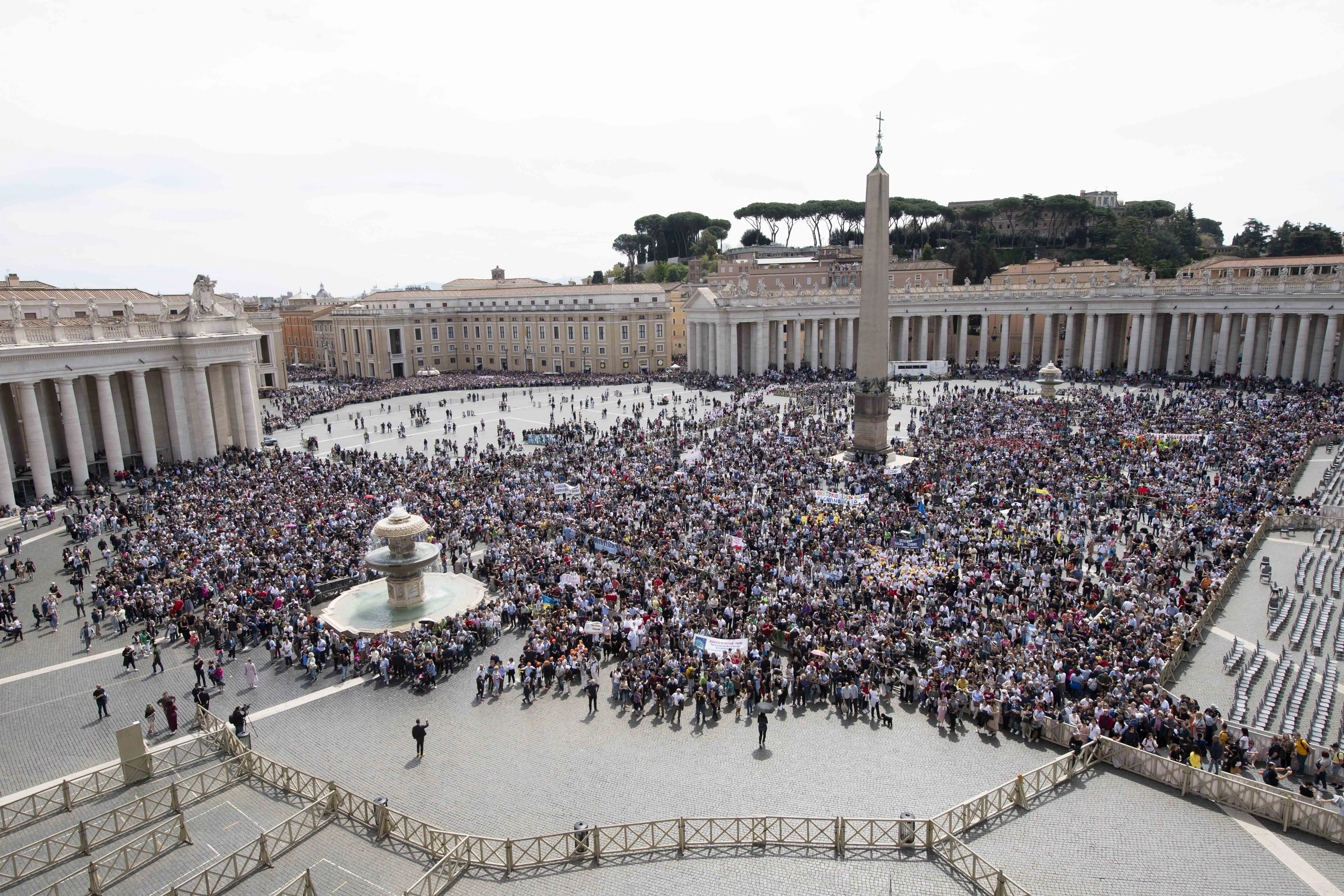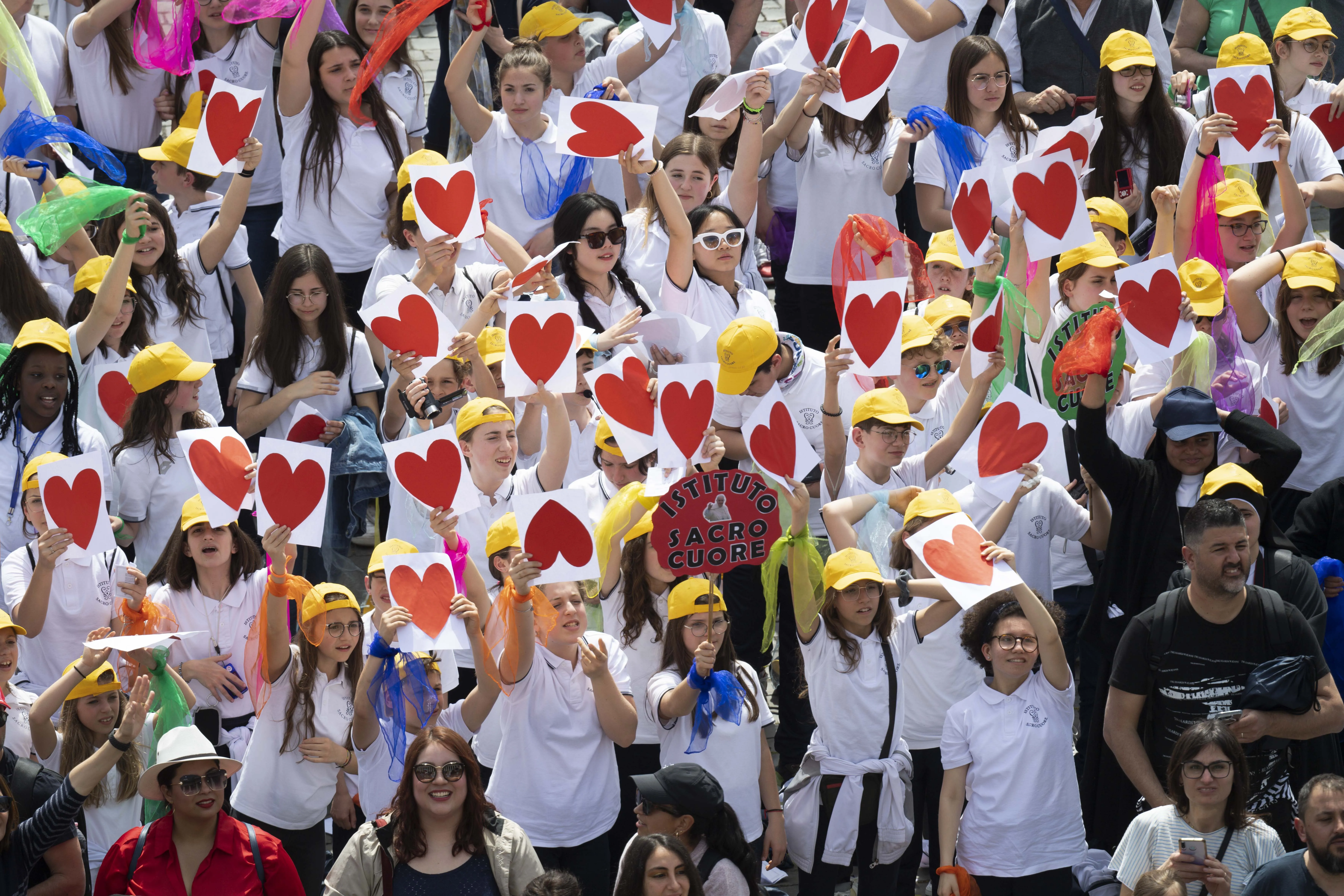
Vatican City, Dec 17, 2019 / 10:02 am (CNA).- For more than a year, CNA has been following a Vatican financial scandal involving a bankrupt Italian hospital, a potentially illicit loan from the Vatican’s central bank, and a controversial grant request to an American charitable foundation.
The financial scandal is one of several unfolding at the Vatican, and covered by CNA. Having trouble keeping them straight? You’re not alone. This is the first in a series of CNA explainers, designed to help you keep track of the money trails in and out of the Vatican.
Here’s the IDI scandal in a nutshell:
In 2012, an Italian hospital, owned by a religious order, went bankrupt, because its administrators had run up large debts while embezzling millions of dollars. The Vatican Secretariat of State then created a for-proft partnership with the religious order that had owned the hospital. The partnership agreed to purchase the hospital. To do so, it received – through a complex series of transactions – 50 million euro, through a loan from the Vatican central bank, APSA, despite the fact that APSA had agreed with European banking regulators not to make commercial loans.
In an attempt to take the loan off APSA’s books, officials in the Secretariat of State then asked the Papal Foundation, a U.S.-based charitable foundation, for a $25 million grant, which they reportedly requested under misleading or ambiguous pretenses. The grant was approved, but subsequent questions from board members ultimately led to controversy and opposition. The Vatican’s secretary of state, Cardinal Pietro Parolin, has said he organized the loan and the grant.
Here are the major figures and developments in the ongoing story of the IDI hospital:
IDI hospital – The Istituto Dermopatico dell’Immacolata (IDI), an Italian dermatological hospital. After a series of embezzlement scandals drove the hospital into bankruptcy, it was purchased by a for-profit partnership created between the Vatican’s Secretariat of State and the religious order that had owned and managed the hospital.
IOR – The Vatican’s commercial bank, also known as the Institute for Religious Works, or the Vatican Bank. In 2015, the IOR rejected a request for a 50 million euro loan to a for-profit partnership created between the Vatican Secretariat of State and a religious order with the intention of purchasing the bankrupt IDI hospital. IOR board members determined that the hospital would never be able to repay the loan.
APSA – The Vatican’s central bank, similar to a federal reserve. Under 2012 European regulatory agreements, APSA cannot make commercial loans. However, after the IOR in 2015 rejected a 50 million euro loan request to purchase the bankrupt IDI hospital, APSA approved the loan, raising questions of whether it violated European regulations in doing so. Officials with the Vatican Secretary of State then asked the U.S.-based Papal Foundation for a grant to help remove the loan from APSA’s books. That grant fell through, and APSA has now reportedly written off most of the loan.
Papal Foundation – A U.S.-based group that gives grants to causes endorsed by the pope, often in developing nations and typically of $300,000 or less. The Papal Foundation was asked in June 2017 for a $25 million grant to help with a temporary cash shortage at the IDI hospital. The funding was initially approved, with cardinal board members who supported the grant outnumbering lay board members who opposed it. However, some lay board members continued to object to the grant, questioning whether it was actually intended to cover the bad APSA loan. Amid increased scrutiny, the grant collapsed. $13 million of the grant has already been paid, which the Vatican Secretary of State now says is being treated as a loan that will be repaid through discounts against future grant requests.
Cardinal Angelo Becciu – Formerly the number two official at the Vatican Secretariat of State. Multiple Vatican sources have told CNA that Becciu, along with Cardinal Giuseppe Versaldi, was key in organizing the effort to acquire the IDI hospital and to pressure the Papal Foundation into approving a $25 million grant to help offset the potentially illicit APSA loan, removing it from the books. Becciu denies any involvement, saying he had lost interest in the project by the time of the Papal Foundation grant.
Cardinal Pietro Parolin – Vatican Secretary of State. Parolin told CNA that he was responsible for arranging the 2014 loan of 50 million euros from APSA, the Vatican’s central bank, to partially fund the purchase of the bankrupt IDI hospital. He said the arrangement was “carried out with fair intentions and honest means,” although the loan appears to violate 2012 regulations prohibiting APSA from making commercial loans. He also said that he had devised a plan, along with Cardinal Donald Wuerl, to ask the U.S.-based Papal Foundation for the money to cover APSA’s bad loan.
Theodore McCarrick – Former cardinal who has now been laicized for sexually abusing minors. McCarrick met with the secretary of APSA in July 2017. He later pressured lay board members of the Papal Foundation to support the grant, suggesting that questioning the Vatican funding request was inappropriate and would challenge the integrity of the foundation itself.
Cardinal George Pell – Former head of the Prefecture for the Economy, charged with overseeing the Vatican’s financial accountability. In this role, Pell reportedly objected to the APSA loan to buy the IDI hospital. After lobbying from Becciu, Pope Francis withdrew oversight authority of APSA from Pell’s office in 2015. Pell is currently in prison in Australia, convicted on controversial sex abuse charges, which he is appealing.
If you value the news and views Catholic World Report provides, please consider donating to support our efforts. Your contribution will help us continue to make CWR available to all readers worldwide for free, without a subscription. Thank you for your generosity!
Click here for more information on donating to CWR. Click here to sign up for our newsletter.






“$13 million of the grant has already been paid, which the Vatican Secretary of State now says is being treated as a loan that will be repaid through discounts against future grant requests.” Repaid through discounts on grant requests? What kind of smoke and mirrors ridiculousness is that suggestion? IMO this transaction is simply the most visible kind of financial shenanigans that also go on at the diocese and parish level around the world. In addition, your parish may disguise the Peter Pence collection at Christmas by not even disclosing the purpose of the collection at Christmas. Or the pastor may make a contribution out of parish funds in lieu of actually taking up a Peter’s Pence collection.